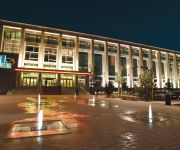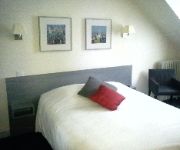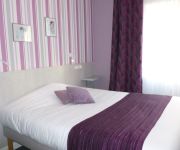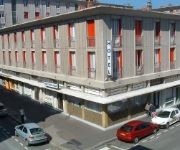Facts and Data
Webpages:
Official Unesco Page
View photos from OUR PLACE the World Heritage collection
lehavre.fr
Basis Data:
Unesco World heritage since: 2005
Size of heritage: 133 ha
- Buffer zone: 114 ha
Coordinates:
Longitude: 0,108°
Latitude: 49,493°
Summary
The city of Le Havre, on the English Channel in Normandy, was severely bombed during the Second World War. The destroyed area was rebuilt according to the plan of a team headed by Auguste Perret, from 1945 to 1964. The site forms the administrative, commercial and cultural centre of Le Havre. Le Havre is exceptional among many reconstructed cities for its unity and integrity. It combines a reflection of the earlier pattern of the town and its extant historic structures with the new ideas of town planning and construction technology. It is an outstanding post-war example of urban planning and architecture based on the unity of methodology and the use of prefabrication, the systematic utilization of a modular grid, and the innovative exploitation of the potential of concrete.
Location on Map
Show bigger map on Openstreetmap
Le Havre, the City Rebuilt by Auguste Perret
Located in the Department of Seine-Maritime, in the picturesque region of Haute-Normandie, Le Havre is a UNESCO World Heritage site that stands as a testament to the remarkable architectural vision of Auguste Perret. This city, once devastated by the ravages of World War II, was rebuilt from the ground up under Perret's guidance, resulting in a unique urban landscape that seamlessly blends modernity and tradition.
History
The history of Le Havre dates back to the 16th century when it was established as a strategic port by King Francis I. Over the centuries, it flourished as a major trading hub, connecting France to the rest of the world. However, during World War II, the city suffered extensive damage due to intense bombings, leaving it in ruins.
After the war, the French government faced the daunting task of rebuilding Le Havre. They turned to Auguste Perret, a renowned architect known for his innovative use of reinforced concrete. Perret's vision was to create a modern city that would not only meet the needs of its inhabitants but also serve as a symbol of hope and resilience.
The City Rebuilt
Perret's plan for Le Havre was ambitious and groundbreaking. He designed a city that embraced the principles of urbanism, with wide streets, spacious squares, and functional buildings. His use of reinforced concrete allowed for the construction of large, open spaces and innovative architectural forms.
One of the most iconic structures in Le Havre is the Church of Saint Joseph, designed by Perret himself. This towering masterpiece stands as a symbol of the city's rebirth, with its unique bell tower reaching towards the sky. The interior of the church is equally impressive, with its minimalist design and abundant natural light.
Another notable feature of Le Havre is its residential buildings, which showcase Perret's mastery of concrete construction. These apartment blocks, characterized by their clean lines and geometric shapes, provide a harmonious backdrop to the city's urban fabric.
Current State
Today, Le Havre stands as a living testament to Perret's architectural genius. The city's unique blend of modernist architecture and traditional Normandy charm has earned it recognition as a UNESCO World Heritage site since 2005.
Le Havre continues to thrive as a vibrant port city, welcoming visitors from around the world. Its rich cultural scene, including museums, art galleries, and theaters, offers a diverse range of experiences for both locals and tourists.
The city's commitment to preserving its architectural heritage is evident in the meticulous restoration and maintenance of its buildings. The Perret Model Apartment, a preserved example of Perret's residential design, allows visitors to step back in time and experience the innovative living spaces of the mid-20th century.
Le Havre, the city rebuilt by Auguste Perret, stands as a testament to the resilience of its people and the power of architecture to transform and inspire. Its unique blend of history, modernity, and natural beauty makes it a must-visit destination for anyone seeking to explore the rich cultural heritage of France.
Hotels and places to stay
Du Pasino Partouche
Vent d´Ouest
Best Western Art Hotel
Citotel Le Carmin
ibis Styles Le Havre Centre Auguste Perret
Oscar
Le Petit Vatel
Citotel Richelieu
LES GENS DE MER
Séjour Fleuri
Videos from the area
Videos provided by Youtube are under the copyright of their owners.















